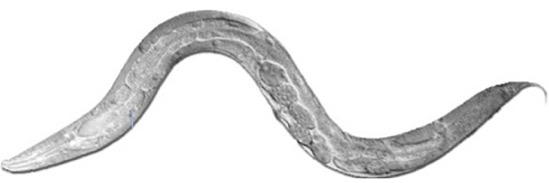Experimental Evolution of C. elegans
Most experimental evolution work uses single-celled organisms, e.g. bacteria or the algae Chlammydomonas. But some evolutionary theories can only be tested in something that has a face. The nematode Caenorhabditis elegans is about the smallest thing that still has a separate germline and soma and so is useful for testing theories of ageing.
We use C. elegans to ask why lifespan increases in response to low food. The main evolutionary explanation goes like this: If populations generally experience fluctuating food supply, perhaps it would be advantageous to delay reproduction during low food and invest in surviving to a period of high food when reproduction can start again. This suggests that plasticity of lifespan to food availability should only evolve when environments fluctuate within an individual's lifetime and when high food is likely to return. To test this predictionwe take an experimental approach, evolving worms under stable and fluctuating environments and testing when plasticity to food is more likely to evolve. We are also examining natural variation in the response to low food and testing whether individuals with more plastic lifespans also have more plastic reproduction.
